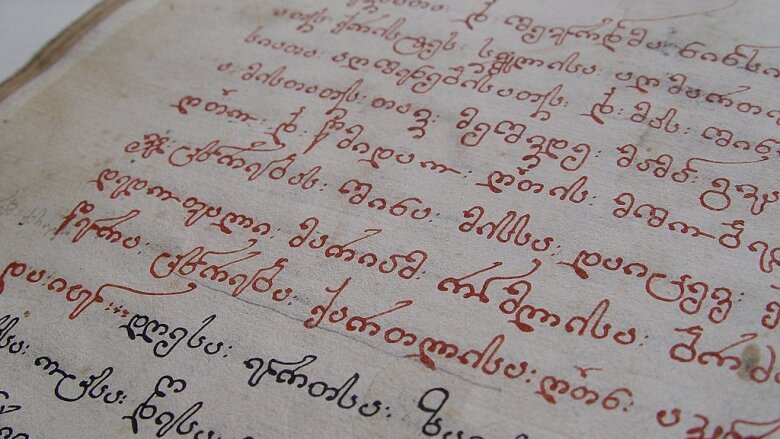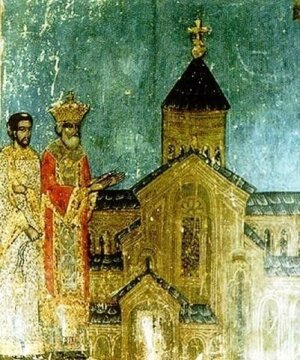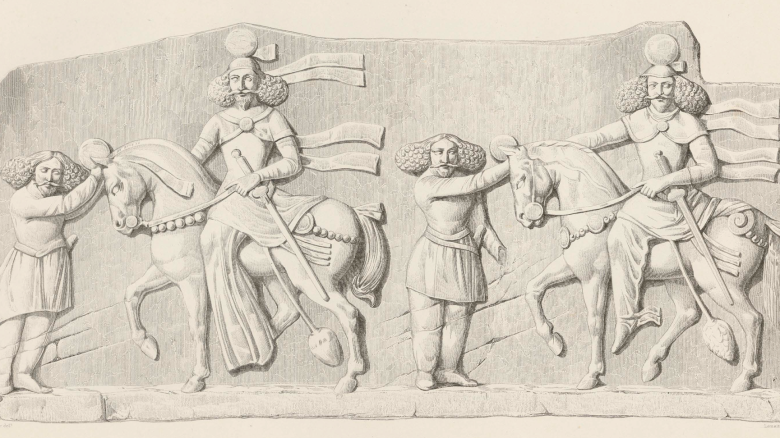PD Dr. Frank Schleicher
-
Vita
17. April 1978
geboren in Weida
Juni 1996
Abitur am Georg-Samuel-Dörffel Gymnasium Weida
2001-2006
Studium der Alten Geschichte, Mittelalterlichen Geschichte sowie der Informatik an der Friedrich-Schiller-Universität Jena
Dezember 2006
Abschluss als M.A. (Magister Artium)
2007-2012
Promotionsstudium an der Philosophischen Fakultät der FSU Jena (Stipendium der Hans Böckler Stiftung)
2012-2013
wissenschaftlicher Mitarbeiter am Lehrstuhl für Alte Geschichte an der Friedrich-Schiller-Universität Jena
2015-2018
wissenschaftlicher Mitarbeiter im DFG-Forschungsprojekt "Iberien in der Spätantike" an der Friedrich-Schiller-Universität Jena
2018-2022
wissenschaftlicher Mitarbeiter im DFG-Forschungsprojekt "Imperia sine fine" an der Friedrich-Schiller-Universität Jena
März 2020
Abschluss des Habilitationsverfahrens mit Erteilung der venia legendi an der Philosophischen Fakultät der Friedrich-Schiller-Universität Jena: „Iberien in der Spätantike – ein Kleinstaat im Spannungsfeld zweier Imperien”
WiSe 2020/21
Vertretung des Lehrstuhlinhabers für Alte Geschichte an der Universität Bremen
2022-2025
wissenschaftlicher Mitarbeiter im DFG-Forschungsprojekt "Vasallenherrschaft im Sāsānidischen Commonwealth" an der Friedrich-Schiller-Universität Jena
-
Publications
Monographs
- Cosmographia Christiana. Kosmologie und Geographie im frühen Christentum, Paderborn 2014.
- Iberia Caucasica. Ein Kleinkönigreich im Spannungsfeld großer Imperien, Stuttgart 2021.
Editorship
- Kritzinger, Peter / Stickler, Timo / Schleicher, Frank (Hrsg.), Studien zum römischen Zollwesen, Duisburg 2015.
- Schleicher, Frank / Stickler, Timo / Hartmann, Udo (Hrsg.), Iberien zwischen Rom und Iran. Beiträge zur Geschichte und Kultur Transkaukasiens in der Antike, Stuttgart 2019.
- Hartmann, Udo / Schleicher, Frank / Stickler, Timo (Hrsg.), Imperia sine fine? Der römisch-parthische Grenzraum als Konflikt- und Kontaktzone, Stuttgart 2022.
Papers
- Der römische Zoll in der Spätantike, in: Kritzinger, Peter / Stickler, Timo / Schleicher, Frank (Hrsg.), Studien zum römischen Zollwesen, Duisburg 2015, 57-88.
- Die Gogarene im ausgehenden fünften Jahrhundert. Politische Handlungsspielräume und religiöser Pragmatismus, Anabasis 8, 2017, 226-257.
- Eine Polis an der Grenze des karthagischen Machtbereiches, Historia 66, 2017, 384-400.
- Die Chronologie der k'art'velischen Könige und das Ende des iberischen Königtums, in: Schleicher, Frank / Stickler, Timo / Hartmann, Udo (Hrsg.), Iberien zwischen Rom und Iran. Beiträge zur Geschichte und Kultur Transkaukasiens in der Antike, Stuttgart 2019, 69-98.
- The Caucasian Territorial Churches and the Sāsānid Commonwealth, Vostok (Oriens) 2021.5, 82-93.
- Kontinuität und Wandel. Die wirtschaftliche Entwicklung der nabatäischen Gebiete als Phänomen des Grenzraumes, in: Hartmann, Udo / Schleicher, Frank / Stickler, Timo (Hrsg.), Imperia sine fine? Der römisch-parthische Grenzraum als Konflikt- und Kontaktzone, Stuttgart 2022, 13-42.
- with Nicolas Preud‘homme, The Stele of Sargas – New Reading and Commentary, in: Epigraphica 85, 2023, 341–381.
- Armenien und der Südkaukasus in severischer Zeit. Historiographische Tradition und politische Bedeutung, in: Hoffmann-Salz, Julia / Heil, Matthäus / Wienholz, Holger (Hrsg.), The Eastern Roman Empire Under the Severans. Old Connections, New Beginnings?, Göttingen 2024, 279–308.
- Patria und imperium sine fine im fünften Jahrhundert? Orosius und der Geist der Zeit, in: Timo Stickler / Umberto Roberto (Hrsg.), Das Weströmische Reich und seine Erforschung. Neue Perspektiven, Stuttgart 2024, 67–91.
Reviews
- RezensionExternal link zu Hose, Martin (Hrsg.), Synesios von Kyrene. Ägyptische Erzählungen oder Über die Vorsehung, Tübingen 2012, H-Soz-u-Kult, 11.02.2013.
- RezensionExternal link zu Rapp Jr, Stephen H., The Sasanian World through Georgian Eyes. Caucasia and the Iranian Commonwealth in Late Antique Georgian Literature, Farnham 2014, H-Soz-Kult, 28.09.2015.
- RezensionExternal link zu Rathmann, Michael (Hrsg.), Tabula Peutingeriana. Die einzige Weltkarte aus der Antike, Darmstadt 2016, H-Soz-Kult, 13.02.2017.
- RezensionExternal link zu Andrade, Nathanael J., Zenobia. Shooting Star of Palmyra, New York 2008, in: H-Soz-Kult, 16.12.2019.
- RezensionExternal link zu Loosley Leeming, Emma, Architecture and Asceticism. Cultural Interaction between Syria and Georgia in Late Antiquity, Leiden / Boston 2018, in: sehepunkte 20, 2020, Nr. 12, 15.12.2020.
- Rezension External linkzu Gräf, Stefanie / Meißner, Burkhard (Hrsg.), De rebus bellicis. Waffen und Finanzen in der Spätantike, Darmstadt 2023, in: H-Soz-Kult, 26.02.2024.
- Rezension External linkzu Oellig, Marie: Die Sukzession von Weltreichen. Zu den antiken Wurzeln einer geschichtsmächtigen Idee, Stuttgart 2023, in: H-Soz-Kult, 11.09.2023.
- Rezension zu Pilhofer, Philipp (Hrsg.), Das Martyrium des Konon von Bidana in Isaurien, Einleitung, Text und Übersetzung, Berlin u. a. 2020, in: Gnomon 95, 2023, 75–78.
-
Ancient sources on the Caucasus (1st-4th century A.D.)
Kʽartʽlis Cʽxovreba - Version of the queen Mariam Dadiani
Image: Buba KudavaProf. Dr. Levan Gordeziani, Dr. Giorgi Ugulava, Maia Daniela (Iv. Javakhishvili Tbilisi State University), PD Dr. Frank Schleicher (FSU-Jena)
Funded by: Shota Rustaveli National Science Foundation of Georgia
Duration: April 2022 - March 204
The project Ancient Sources on the Caucasus (1st-4th century AD) covers the study of Greek-Roman and Oriental sources of the first four centuries AD and their classification and analysis in the cultural and political context. This period has been studied only casually by Georgian scholars, and most Georgian scholarly studies on the subject treat the sources only from an internal perspective. Global and regional political processes have been largely ignored. In order to overcome this shortcoming and to broaden the perspective, the project cooperates with the Friedrich Schiller University in Jena, a university of major importance in the study of the Caucasus region. In Jena the Caucasus region is studied from a Pan-Caucasian perspective, from which the research project will benefit greatly. This is because neither Georgian, Armenian nor Azerbaijani research has so far dealt with sources from Albania and Armenia under aspects of geopolitical contexts.
For the success of this project it is essential that all written sources - the Georgian, Armenian, Albanian, Arabic, Persian and the Greek-Roman - are carefully evaluated, their messages brought together and placed in a global context. This will be done from both an internal and external perspective. The global context in question consists of the ongoing rivalry between the Imperium Romanum on the one hand and the empire of the Parthians or their successors, the Sāsānids, on the other. Within this conflict, the Caucasus region played a central role as a buffer and border zone. Since these functions continue into today's politics, the knowledge gained in this research project can also serve as a basis for understanding modern structures.
The local Caucasian states developed their own and different identities under the impact of this conflict. The project should enable Georgian research to recognize these identities and gain a better understanding of their similarities and differences. Western research will also benefit greatly from the results of the project. Despite the fact that Western scholars have extensively researched ancient sources, there is no comprehensive study that addresses the historical past of the Caucasus during this period. The study is further relevant because it focuses on a time when the political and cultural identity of the Caucasian states, and especially that of the Kartvelian kingdoms, was formed. This period continues to preserve its importance for the entire Caucasian region to the present day, but especially for Georgia. The features of the identity created in this period are still paradigmatic for the geopolitical and geocultural functioning of the Georgian state.
-
Iberia in Late Antiquity
Mirian III. on a wall-painting inside the Swetizchoweli-Cathedral
Image: LS Alte GeschichteA small state between the priorities of two empires
While recent research concerning Late Antiquity take the manifold relationships between Rome and Persia into account, as well as the contact and conflict zones of both Empires in Armenia, Mesopotamia and in the Arabic steppe zone, the Transcaucasian area between the Black and the Caspian Sea remains in the realm of shades of scientific research.
However, this region was an essential reference point for the late antique Roman Emperors as well as for the Sasanids concerning their geostrategic alignment towards the other great empire: As the northern end of the conflict zone between both empires, the area bore a great meaning in the political and military conflicts, on the other hand it possessed a key position in the security of the borders of both empires against the steppe people who settled north of the Caucasus (Huns, Alans, Khazars). To examine the importance of the Transcaucasian region for the two late antique empires and the repercussion of this position for the local development, the proposed study wants to focus exemplarily on the comparatively well documented kingdom of Iberia that shared a relationship of dependency with each empire.
The political and cultural development of Iberia in Late Antiquity, that has been looked upon rather barely respectively uncritically, concerning the evaluation of the source material, by western and oriental traditions, shall be comprehensively examined. On the one hand, the history of Iberia will be analyzed under an imperial perspective as a case study of the role and positioning of a dependent petty state at the borders of the empires. On the other hand, under a local perspective, the consequences of this geopolitical area for the development of the public and social structures of Iberia, the scope of action of the Iberian monarchs and the consolidation of the local kingdom towards the both imperial rulers and the Iberian nobility, as well as the religious and cultural influences on this region by the empires, will be worked out. Thereby, also the relevance of Christendom within the formation of a local identity will be looked upon. Eventually under a third perspective, the importance of the kingdom within the contact zone between steppe nomads and the great empires will be analyzed.
In this study the different types of sources shall be critically evaluated and be looked upon in their own questionability to gain a new overall ranking of the development of Iberia between the 3rd and 7th c. and so to make a contribution to the reconstruction of its history between antiquity and the Middle Ages. Likewise, the study contributes to a better understanding of the role of dependent states between Rome and Persia in Late Antiquity.
A Workshop de took place from 07.07. to 09.07.2016 where leading specialists discussed their recent researches in Jena. In 2019 the results were published as a collection of essays Iberien zwischen Rom und Iran. Beiträge zur Geschichte und Kultur Transkaukasiens in der Antike de in the series Oriens et Occidens (Volume 29).
The final monograph Iberia CaucasicaExternal link has been published by the Kohlhammer-Verlag in the series "Forum historische Forschung Antike".
-
Imperia sine fine?
The Roman-Parthian frontier zone as conflict and contact area from the late 1st to the early 3rd c. A.D.
The external border of Rome in the Near East has in the past often aroused the attention of researchers. The scientific pursuit of this topic has been mostly shaped by three aspects: First, the military aspect was clearly central; second, the topic was only considered from the Roman point of view; and third, research emphasis was time-wise clearly on Late Antiquity.Against this backdrop, this project targets the systematic examination of the frontier zone in the Near East during the period of Vespasianus or Vologeses I. about 70 AD to Severus Alexander or the downfall of the monarchy of the Arsacids about 230 AD. This temporal limitation seems sensible because it corresponds to a historically coherent epoch. Next to the border security of the empires, especially the political, cultural and economic changes in this frontier zone between the Zagrus Mountains and the Mediterranean Sea, resulting of the collision of two empires, are to be analysed from a local perspective. This examination should show that the region was more often shaped by peaceful relationships than by the often discussed conflicts between the empires. The frontier zone is supposed to be considered and represented consistently from different perspectives as a in many ways independent area of exchange, trade, cultural contacts and political relationships of local and regional actors. The different types of sources, the Greek-Latin tradition, the oriental literary traditions from the Syrian-Mesopotamian cultural area and Iran, the documentary sources and the archaeological evidence of the military facilities and the Near Eastern cultural centres in the frontier zone will be analysed in collaboration with an interdisciplinary workgroup of experts from Jena and also from other countries. In doing so, the individual steps of the examination are supposed to expose two contrary aspects: On the one hand, both empires shaped their peripheries during the considered timeframe through power-political, juridical and military parameters, on the other hand, the area was on both sides of the border moulded by local and regional forces as a connected cultural area sui generis. The forces of the centre and those of the periphery didn't always align, but they both exercised decisive influence on the frontier zone. The systematic examination of the reciprocal interaction of both factors promises a deeper understanding of the local history but also of the bigger historical developments.
-
Vassal rule in the Sāsānid Commonwealth
Reproduction of an early Sasanid rock relief from Salmas (NW Iran) by Charles Texier
Picture: Description de l'Arménie, la Perse et la Mésopotamie, Bd. 2, Paris 1842, Pl. 40The personal relationship of vassal rulers with an imperial centre was a cost-effective method of exercising rule in the Sāsānid Empire. Largely independent, the vassals fulfilled important functions for the empire from the 3rd to the 5th century (border security, tax collection, administration). It was not until the later phase of Sāsānid rule, in the 5th and 6th centuries, that reforms provided the conditions for establishing direct rule across the country. This marked the beginning of a development in which many of the traditional vassal rulers were replaced by Sāsānid officials. However, the Great Kings overestimated the possibilities of their empire, which could not permanently perform the functions of the vassals. Thus began the disintegration of the empire, which contributed to the downfall of Sāsānid rule.
The project Vassal rule in the Sāsānid Commonwealth has the following object of investigation: the concept of vassalage within the Sāsānid dominion for the period from the beginning of Ardašīr I's rebellion (211/12) until the year 602, when a new phase of imperial politics began. In a first step, it will be considered how the Sāsānids dealt with the vassal rulers, some of whom were adopted from their predecessors, the Arsakids. In this context, attention will also be paid to the ways in which the structures of the Sāsānid Commonwealth were influenced by those of their predecessors. Secondly, the study examines why the system of vassal rule was widely abandoned by the Sāsānids from the 5th century onwards in many areas (Armenia, Arabia, …) and replaced by the more expensive direct rule. And thirdly, the analysis moves from the centre to the periphery and asks about the political framework and the scope of action for the vassal rulers themselves.
In doing so, vassal rule will be described as a building block of the Sāsānid 'social system' which caused an extensive administrative, cultural, and religious influence of the peripheral regions by the imperial centre. As such, this study will focus on four key regions in the east, west and south of the Commonwealth, for which numerous sources are available and each of which is well accessible by current research. In this way, the basic structures, and functions of Sāsānid vassal rule will be elaborated and described in an exemplary manner.
The final result of the research project will be a model that describes the structures of the indirect exercise of power by the Sāsānid rulers in their entirety. In addition to the differences and similarities between the various regions, particular attention will be paid to the divergent approaches of the individual Sāsānid rulers. The model thus conceived is intended to form the basis for further research into vassal rule and enable comparison with other ancient empires.



